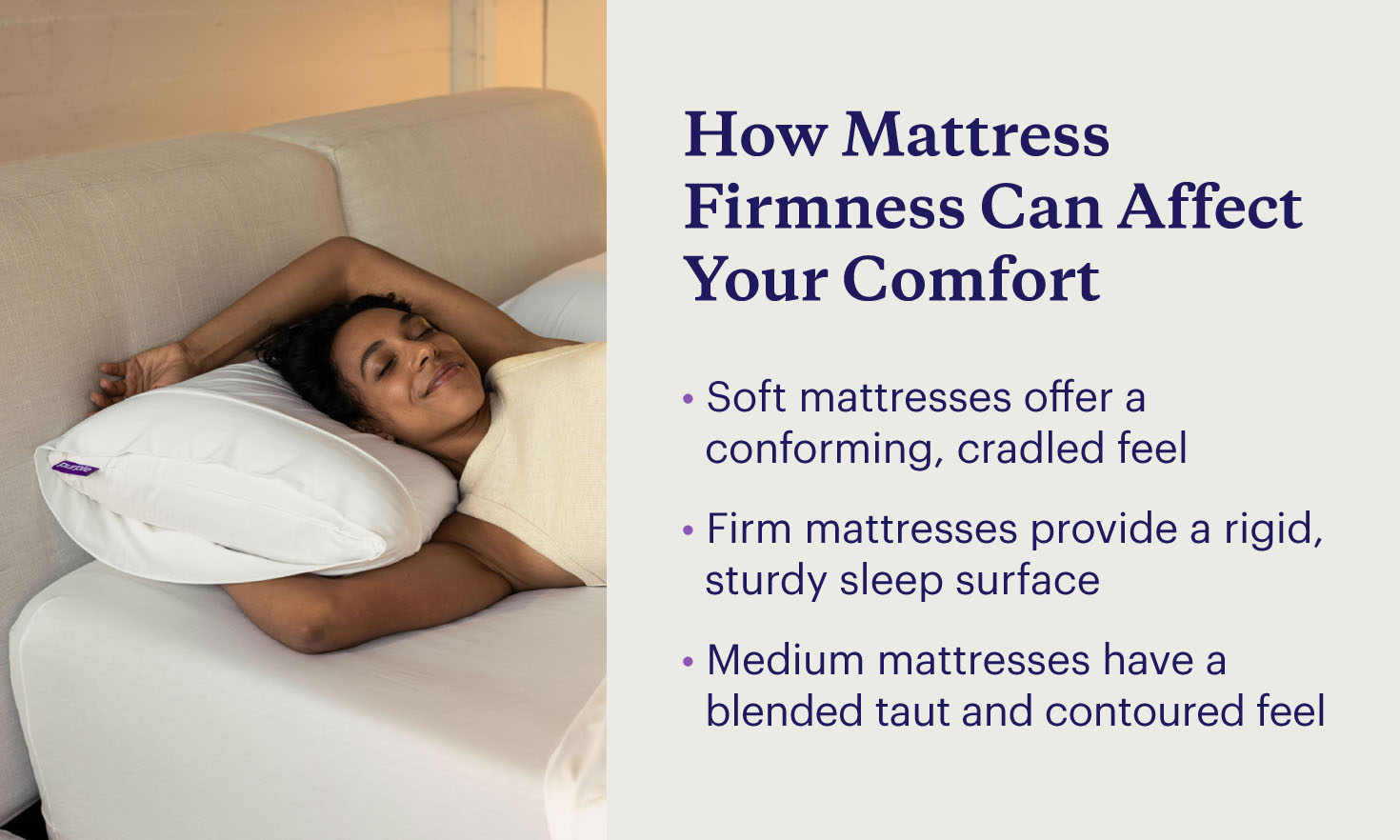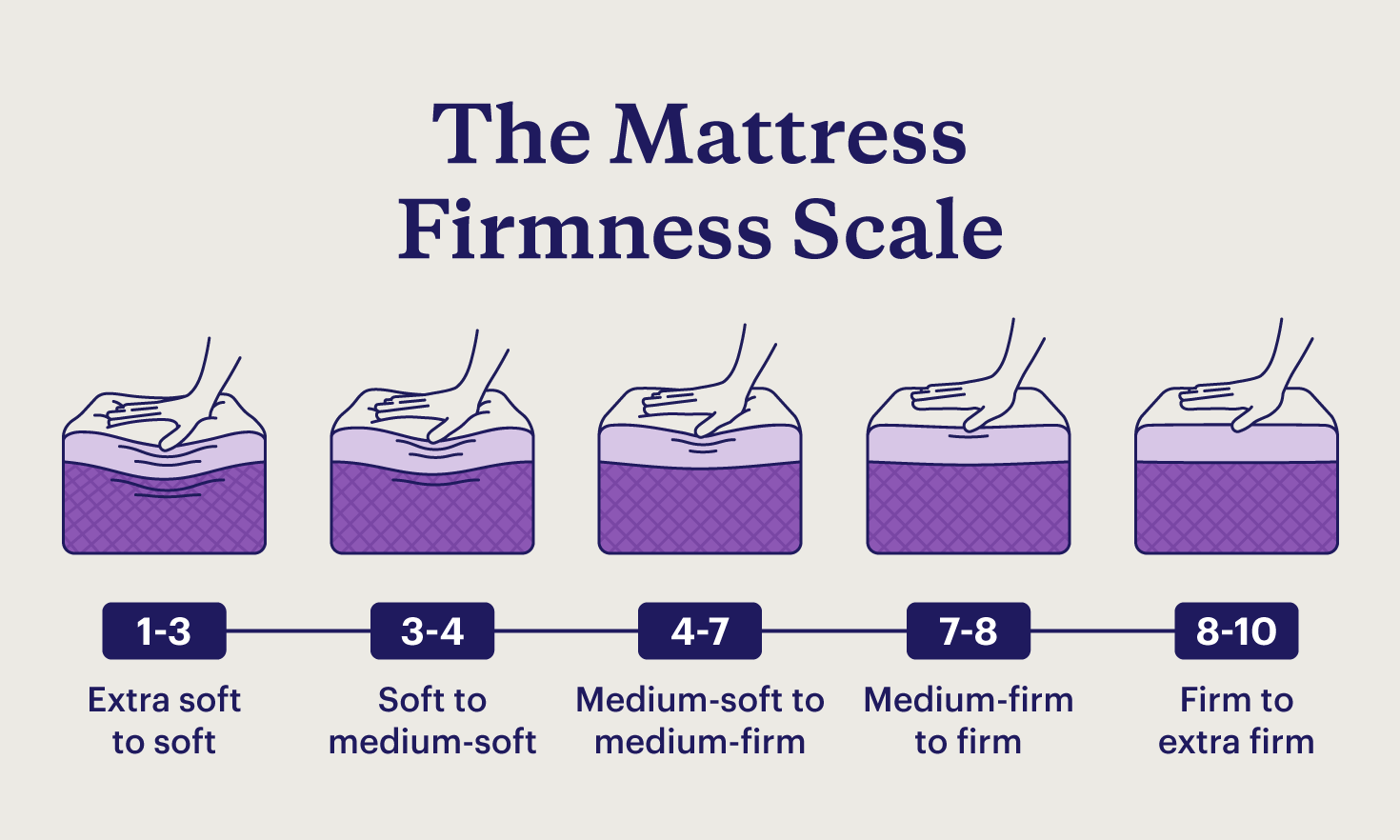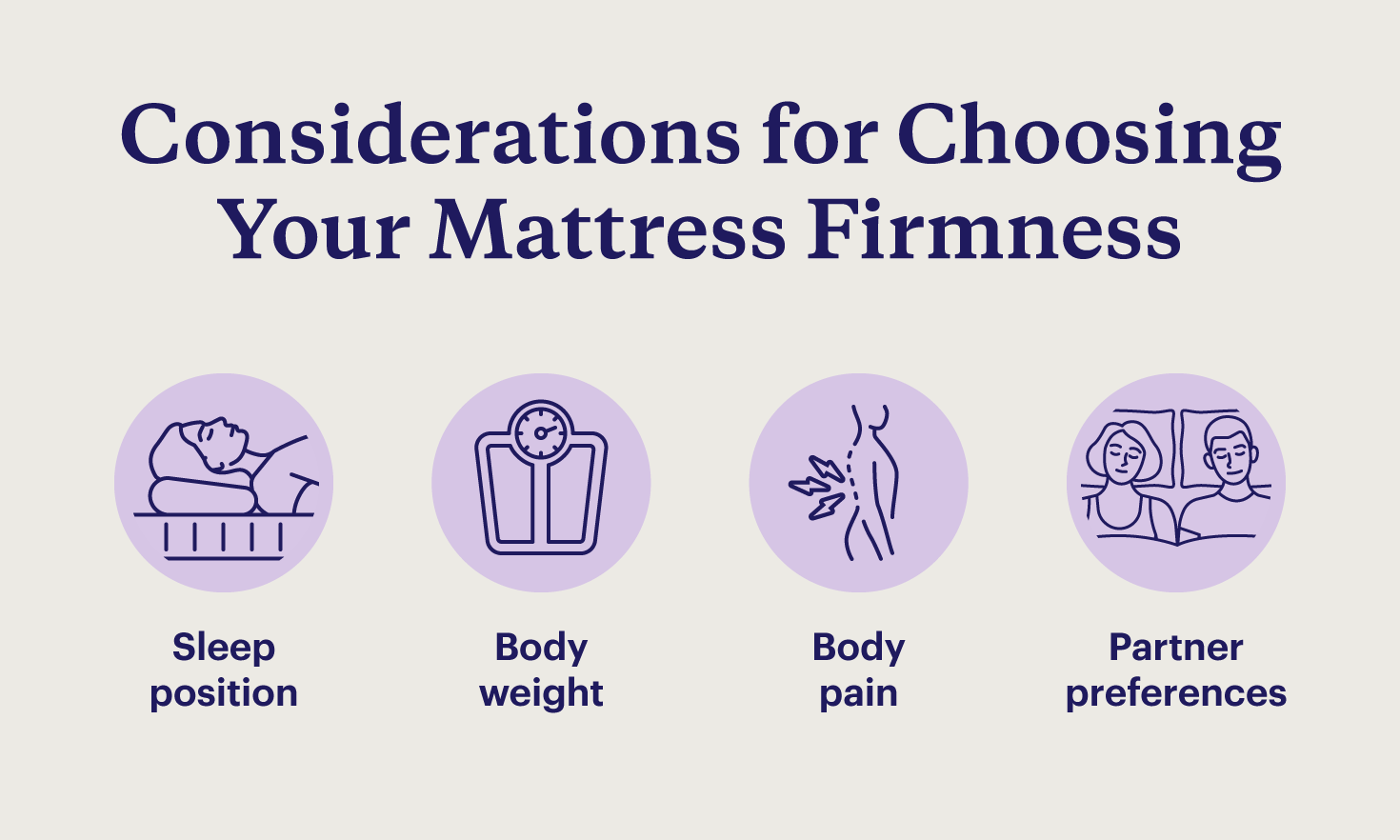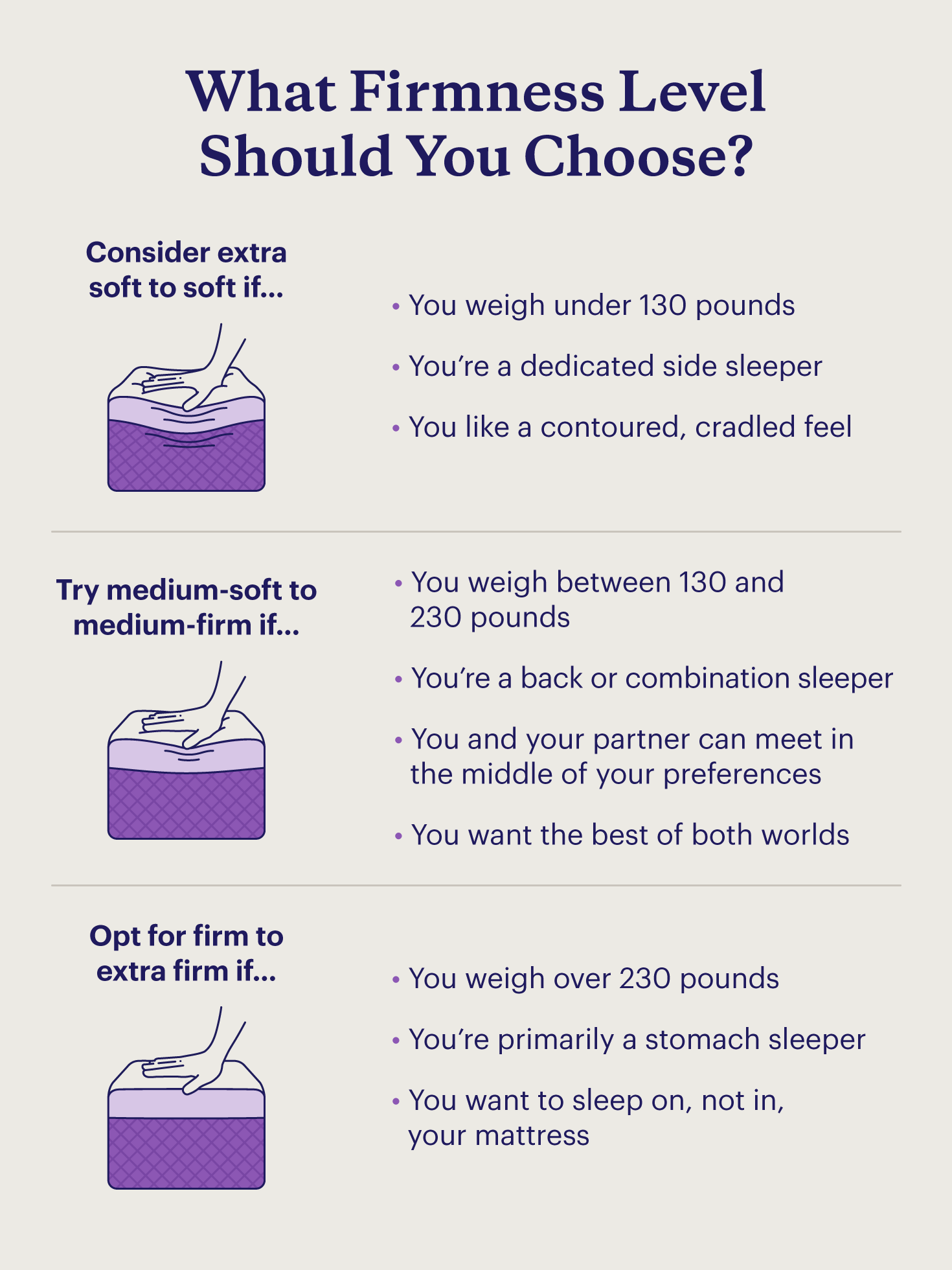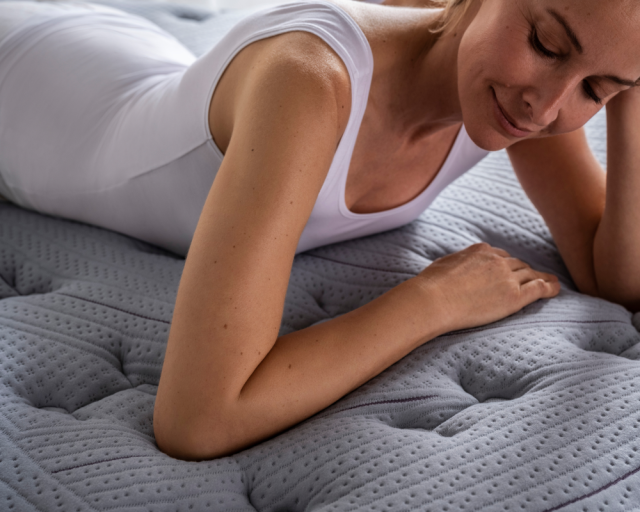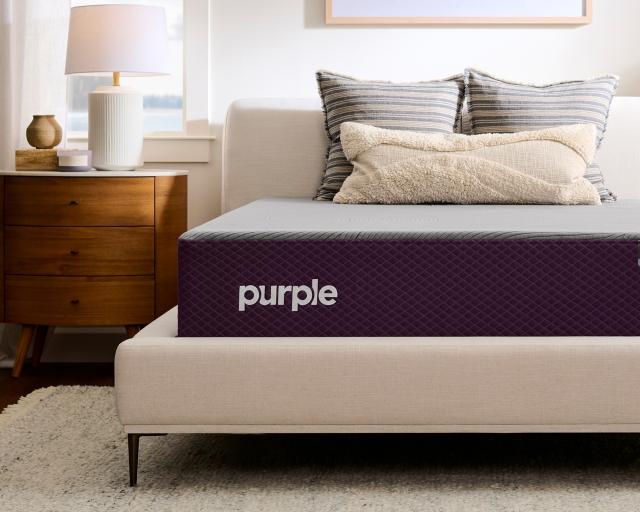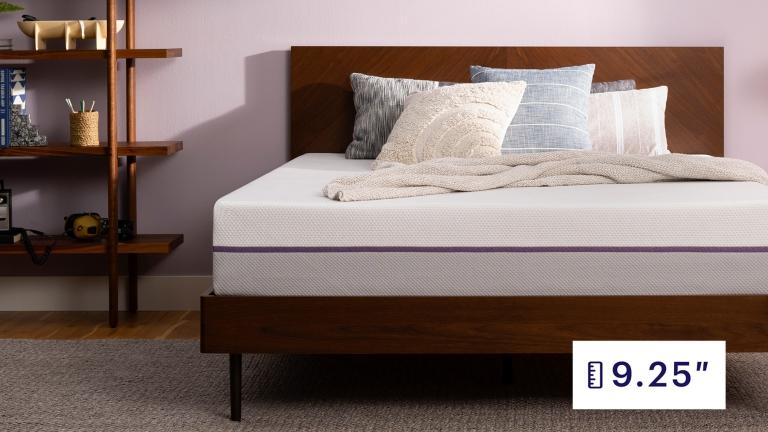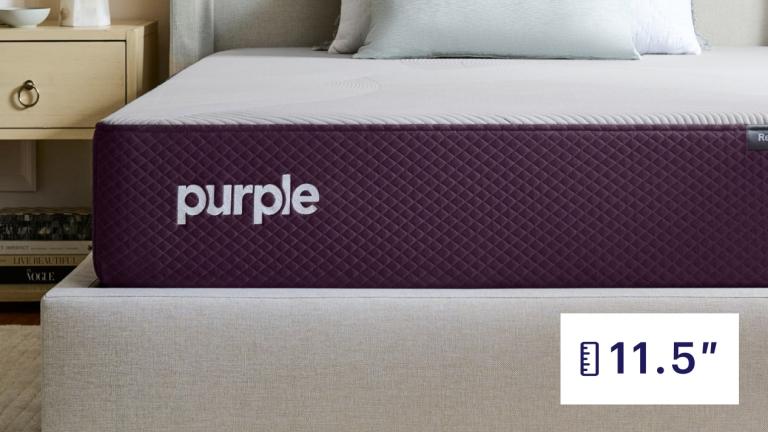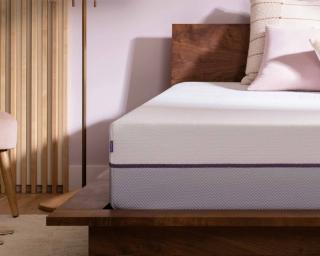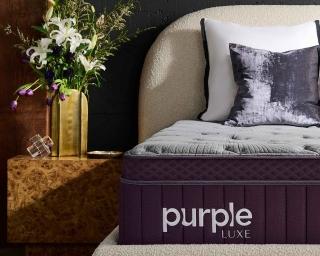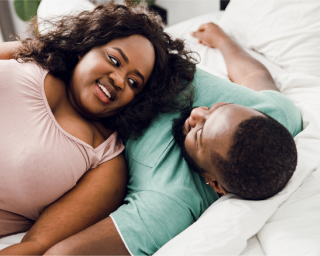Mattress Firmness Scale Explained: The Ultimate Guide
Key Takeaways
- The mattress firmness scale ranges from 1-10, where 1 is the softest and 10 is the firmest.
- Factors like sleeping positions and body weight can help determine which mattress firmness level is right for you.
- Testing mattresses and finding your ideal firmness level can maximize your comfort and sleep quality.
Navigating the mattress firmness scale is a necessary part of buying a mattress if you want to ensure comfortable sleep night after night. There are ways you can make a mattress firmer, but it’s often best to choose the right mattress firmness in the first place.
Mattress firmness levels can be subjective based on your body weight, sleeping position, and unique sleep needs.
But before you can consider how these factors play into your decision, it’s important to learn about the mattress firmness scale so you can more easily determine if a softer or firmer mattress is right for you.
What Is Mattress Firmness?
Mattress firmness refers to how soft or hard your mattress feels, and many manufacturers use a 10-point scale where 1 is the softest and 10 is the firmest. You may have noticed that you sink into some mattresses more than others. These more pliable mattresses are usually softer, while beds that prevent deep sinkage are considered firm.
Firmness levels vary person to person, and a mattress that feels firm to you may feel softer to someone else. Mattress thickness, as well as the construction and materials used, affect mattress firmness. In most cases, memory foam mattresses are softer than latex or hybrid mattresses, but you may encounter exceptions.
Whether you’re considering an innerspring or hybrid mattress, we recommend trying it out for yourself instead of taking someone else's word for it. That’s why Purple offers a 100-day sleep trial — so you can find out what feels best for you!
Why Does Mattress Firmness Matter?
Different types of sleepers have various needs, and there’s no single universal comfort level that all mattresses can fulfill. For example, a firmer mattress might help a heavier sleeper with spinal alignment, but the same surface may feel too stiff and rigid for a lighter sleeper.
Sleeping on a bed with a less-than-ideal firmness level can leave you feeling stiff and unrested in the morning — and that’s just one reason you should research the different types of mattresses before settling on one.
While mattress firmness isn’t the only factor worth considering, choosing the right types of mattress firmness can help address your sleep concerns, from staying cool to relieving pressure points.
Mattress Firmness Scale
Mattress manufacturers use the bed firmness scale to give customers a better idea of how a mattress will feel before they actually make the purchase. Everyone experiences each level of firmness differently, so the best thing to do is test out a mattress for yourself.
Still, understanding the mattress firmness scale is a great starting point for anybody in the market for a new mattress. Consult the mattress firmness chart below for an overview of how the different firmness levels may feel.
Firmness Level | Feel | Description |
1-2 | Extra soft | Closely conforms to the body |
3 | Soft | Plenty of give with less sinkage |
4 | Medium-soft | More conforming with some pushback |
5 | Medium | Balance of a contoured feel with some rigidity |
6-7 | Medium-firm | A slightly more taut surface with some give, suitable for most sleepers |
8 | Firm | Minimal sinkage without conforming to the body |
9-10 | Extra firm | Rigid surface that does not conform or sink |
1-2: Extra Soft
Extra soft mattresses are relatively rare because they offer the least stability of all mattress types. While a soft sleeping surface can sound like heaven, sleeping on these beds may put added pressure on your joints, resulting in body pain and poor sleep quality.
- Support: Extra soft mattresses provide a highly contoured feel, letting you sink into the mattress more than other options.
- Pressure relief: Softer mattresses may provide ample pressure relief for lighter sleepers but can increase pressure and pain for heavier individuals.
- Sleep position: Side sleepers may find softer mattresses the most comfortable because they cradle their shoulders and hips to reduce pressure.
- Body weight: These mattresses are typically suitable for lighter sleepers under 130 pounds who won’t sink too deeply.
The RestorePremier™ Hybrid Mattress in the soft feel is our softest mattress, with Ultra Comfort Foam and the GelFlex® Grid that cradle your pressure points as it deeply conforms to your body for maximum comfort.
3: Soft
Comparing soft and firm mattresses is fairly straightforward — soft beds conform and contour to your body as you sink into the top layer while firmer options hold you steady for stricter alignment. Side sleepers may prefer a relatively soft mattress to cradle their shoulders and hips, but heavier individuals may find that soft mattresses lack the rigidity they need and put additional pressure on their joints.
- Support: Soft mattresses cradle your body for a contoured feel.
- Pressure relief: As you sink into a soft mattress, you may get more pressure relief for your joints, though this can increase pressure for individuals over 230 pounds.
- Sleep position: People who primarily sleep on their sides may prefer softer mattresses that conform to their hips and shoulders.
- Body weight: Lighter sleepers under 130 pounds can gently sink into a soft mattress for pressure relief without compromising the alignment of their spines.
In the soft feel, the RestorePlus™ Hybrid Mattress offers exceptional comfort and pressure relief with our GelFlex® Grid, Ultra Comfort Foam, and 3 Zone Edge-to-Edge Coils to keep you comfortable and supported.
4: Medium-Soft
Medium-soft mattresses fall in the middle of the firmness spectrum, leaning softer for a more contoured feel. For sleepers who like to sink into their beds but need more pushback, a medium-soft mattress may be worth considering.
- Support: Medium-soft mattresses provide more of a sinking, cradled feeling than firmer options.
- Pressure relief: More soft than firm, medium-soft mattresses provide significant pressure relief, especially for lighter and average weight sleepers.
- Sleep position: Side sleepers and back sleepers are more likely to find medium-soft beds comfortable thanks to the pressure relief and moderate support.
- Body weight: Sleepers who are on the lighter side of average (between 130 and 230 pounds) may find medium-soft mattresses more comfortable than heavier sleepers who may sink too deeply into the soft surface.
The Purple Plus® Mattress is a medium-soft option that cushions your body with our proprietary GelFlex® Grid and Ultra Comfort Foam for a contoured feel and soothing pressure relief.
5: Medium
Mattresses with a medium firmness level find a balance between the contoured feel of a soft mattress and the stable feel of a firm one. These mattresses are fairly common but may not appeal to individuals who want more pressure relief or full-body support.
- Support: In the middle of extremes, medium firmness beds may not offer a rigid enough surface for heavier individuals and stomach sleepers.
- Pressure relief: Most sleepers will find that medium firmness levels offer plenty of pressure relief balanced with support for spinal alignment.
- Sleep position: Medium firmness beds provide support and comfort for combination sleepers, back sleepers, and some side sleepers.
- Body weight: Sleepers with an average or under-average weight (up to 230 pounds) may find this firmness comfortable, but heavier individuals may not have enough support.
The Purple Mattress® features our innovative GelFlex® Grid in a medium feel for a cradled, supportive feel that relieves pressure and keeps you cool.
6-7: Medium-Firm
Medium-firm mattresses are among the most popular firmness levels, offering more stability than medium mattresses but still providing a cushioned feel. These mattresses tend to appeal to combination and back sleepers the most, but a wide range of sleepers appreciate this firmness level.
- Support: Medium-firm mattresses are taut with plenty of give for optimal comfort.
- Pressure relief: Though not as conforming as softer mattresses, medium-firm beds cradle your body and offer pressure relief for sensitive joints.
- Sleep position: The combination of support and pressure relief make medium-firm mattresses suitable for most sleep positions, primarily back and combination sleepers.
- Body weight: Sleepers of any size may find medium-firm mattresses comfortable, though these beds may be too firm for lightweight individuals under 130 pounds.
With a medium firmness level, the Purple RejuvenatePremier™ Mattress blends 50% more high-density GelFlex® Grid Plus with 5 Zone Edge-to-Edge Coils and Dual Layers of Ultra Comfort Foam for the ultimate sleep experience.
8: Firm
Firm mattresses tend to offer a fair bit of support while still relieving enough pressure for some combination sleepers. Best for stomach sleepers, firm mattresses are more rigid than softer options but may not provide enough contouring to be comfortable for everyone.
- Support: Firm beds offer more pushback than most mattresses, keeping sleepers on top rather than letting them sink.
- Pressure relief: With some give, firm mattresses provide more pressure relief than extra firm beds but may not be comfortable for most sleepers.
- Sleep position: Firm mattresses can support the spinal alignment stomach sleepers need, and some back sleepers may appreciate the support as well.
- Body weight: Heavier sleepers over 230 pounds may prefer firm mattresses because they often benefit from a more rigid surface that can evenly distribute their weight.
The Purple Restore™ Hybrid Mattress in a firm feel combines the instantly adaptive GelFlex® Grid with Edge-to-Edge Coils for the support and pressure relief you need to sleep well.
9-10: Extra Firm
Like extra soft mattresses, very few people prefer an extra firm mattress, so you won't find many on the market. Extra firm beds have hardly any give, which means they provide a much more taut surface at the cost of that pillowy feeling. While some people have recommended firm mattresses are better for your back, it depends on your personal needs and preferences. That said, this level of firmness can be an excellent option for heavy people who want more support.
- Support: Extra firm mattresses are the most rigid and lack the contoured feel, so a majority of sleepers won’t sink in as they sleep.
- Pressure relief: In exchange for the highest level of back support, extra firm mattresses do not contour to your body.
- Sleep position: Stomach sleepers and some back sleepers may prefer a very firm mattress because it prevents their hips from sinking and keeps their spines better aligned.
- Body weight: Heavier sleepers over 230 pounds are more likely to appreciate an extra firm mattress that offers even weight distribution to keep them comfortable.
The Purple Rejuvenate™ Mattress is our firmest option, maximizing support with high-density GelFlex® Grid Plus and 3 Zone Edge-to-Edge Coils. Enjoy 50% more Comfort Foam and an indulgent Quilted Euro Top for luxurious, restful sleep.
What Determines Mattress Firmness?
Knowing what affects mattress firmness can help you narrow down the best mattress type and firmness for your needs. The primary factors that impact mattress firmness include:
- Mattress type: Some materials tend to be softer or firmer than others. For example, compared to the firm and bouncy feel of latex, memory foam is one of the softest materials, so memory foam mattresses often feel softer.
- Construction: How your mattress is constructed can impact its firmness. A mattress with thicker layers of foam on the top may feel softer than one with a thin comfort layer or thicker sections of latex or coils.
- Sleeper weight: Your body weight often affects how firm a mattress feels. This metric is subjective but should be considered when choosing a mattress.
How To Choose the Right Mattress Firmness Level
There is no universal comfort level that suits everyone when it comes to mattresses, so in order to choose a mattress that meets your needs, it’s important to consider the following factors:
1. Sleeping Position
Your preferred sleeping position often affects the amount of support and pressure relief you need from a mattress, as well as what feels most comfortable. Ultimately, you should prioritize what feels best, as everyone has different needs and preferences. Still, these general recommendations can give you a good idea of what to look for.
- Side sleepers: Side sleepers need cushioning for their shoulders and hips and support for spinal alignment. Individual preferences may vary, but the best mattress firmness for side sleepers is often medium-soft to medium-firm.
- Back sleepers: Back sleepers benefit from a medium-firm to firm mattress that relieves pressure point pain with support to keep the spine in neutral alignment.
- Stomach sleepers: For stomach sleepers, keeping the spine aligned without causing discomfort is often a priority. Medium-firm to firm mattresses help keep the hips from sinking, which can cause lower back pain.
- Combination sleepers: Combination sleepers need a versatile mattress that can comfortably accommodate them as they shift positions. Medium-soft to medium-firm mattresses provide this balance for most combination sleepers.
2. Body Weight
Your weight can affect the way you experience different firmness levels, so consider your weight when you choose a mattress firmness to ensure you get the feel you want.
As long as the total weight of sleepers, bedding, and pets does not exceed the mattress weight limit, you can safely choose a mattress based on what feels best.
Though your individual preferences may vary, here are some general recommendations for mattress firmness levels based on your body weight:
- Lightweight sleepers: Lighter individuals put less pressure on their mattresses, so they may perceive them as being firmer than their firmness rating and can benefit from a softer bed as a result.
- Average weight sleepers: Average weight sleepers usually experience firmness as intended based on ratings. With this in mind, consider your personal sleeping style and preferred position when buying.
- Heavier sleepers: Heavier individuals may experience mattresses as softer than their ratings. Rather than immediately opting for a firm mattress, make sure you consider your personal comfort preferences and needs first.
3. Pain
Body pain is a common reason people consider getting a new bed, and considering the type of pain relief you need can help you decide what mattress firmness is right for you.
The best firmness level to relieve pressure and pain may vary, so keep your comfort preferences in mind when considering different firmness options.
Here are a few general recommendations for how to choose mattress firmness based on localized pain to help inform your decision:
- Shoulder pain: Some side sleepers develop shoulder pain or stiffness if their mattress is too firm and doesn’t cradle their hips or shoulders. A soft to medium-firm mattress might be a good fit if you have pain in your shoulder.
- Back pain: Waking up with back pain can be the result of a mattress that is too soft and lacks support. Medium-firm mattresses may be some of the best options for back pain, offering support and pressure relief to relieve pain.
- Hip pain: Medium-soft to medium-firm mattresses can provide relief from hip pain by cradling sensitive hips and aligning your spine. You can also try adjusting your sleep position with pillows under or between your knees to relieve hip pain.
Bad mattresses can cause or worsen hip pain, as well as back and shoulder pain, so it’s important to choose a bed that provides the support and relief you need.
4. Partner Preferences
If you share your bed with a significant other, make sure you consider their preferences and sleep position as well as your own. We recommend taking the time to discuss your individual preferences and test out mattresses together.
A medium-firm bed is a good halfway point, but this may not be the best mattress for all couples. Consider body weight, comfort preferences, sleep needs, and budget to inform what firmness levels are best for you and your partner.
If you can’t find a good compromise, you may want to consider a split king model so you and your partner can get the support, pressure relief, and quality rest you both need.
Firmness vs. Support: What’s the Difference?
Though they may seem similar, mattress firmness and support are not the same thing. Firmness is how the mattress feels, while support refers to how well the mattress can keep your spine aligned, support your body, and relieve pressure from sensitive areas. Support is largely subjective and dependent on your body and sleep style, so what feels most supportive to you may differ from what other people prefer.
A firm mattress may offer more support than a very soft mattress, but this is not always true. The level of support a mattress offers has more to do with the materials, thickness, and construction than the firmness itself.
Purple mattresses feature our innovative GelFlex® Grid technology, providing the comfort you're looking for without sacrificing any support. Our beds instantly adapt to your body while cradling your pressure points regardless of model firmness.
Purple Mattresses: The Sleep Solution for All Firmness Levels
From your body weight and preferred sleeping position to existing body pain, it’s important to consider a variety of factors that can affect which rating on the mattress firmness scale is right for you.
Once you determine what firmness level is best for you, take our mattress quiz to find the perfect Purple mattress.
Purple has a variety of high-quality, comfortable mattresses to meet your specific needs. With our patented GelFlex® Grid technology, you get the comfort and support exactly where you need it.
FAQ
Deciding on the best firmness level for you depends on several factors, including:
- Your ideal sleep position
- Your body weight
- Any existing pain you want to relieve
- Your partner’s preferences
The mattress firmness scale ranges from 1 (extra soft) to 10 (extra firm), and you can decide how firm your mattress should be based on how much support, pressure relief, and comfort you want from your mattress.
Medium-firm mattresses are among the most popular types of mattresses, acting as a happy medium with plenty of support for spinal alignment as well as cushioning pressure relief.
People with lower back pain may benefit from a medium-firm to firm mattress that prevents the hips from sinking, which can put added pressure on the lower spine. Some of the best mattresses for back pain provide ample pressure relief and zoned support.
Ultimately, low back pain sufferers should look for a mattress that cradles the hips and keeps the spine aligned while considering their unique comfort preferences.
Both firm and soft mattresses can be beneficial depending on your needs and preferences. If you’re a lightweight side sleeper, you may prefer a soft mattress that cradles your hips and shoulders, but if you’re a heavier stomach sleeper, a firm mattress may keep your spine better aligned and prevent stiffness in the morning.
Everyone has unique needs, so it’s important to consider all of your options before ruling any out; what’s uncomfortable for someone else may be the perfect fit for you!
Your mattress may be too firm if:
- You wake up sore or in pain
- You’re struggling with insomnia
- You toss and turn but can’t get comfortable
- You start your day feeling fatigued
If you think your bed is too firm, there are some ways you can make your mattress softer. In some cases, finding a replacement may be a better option to ensure you get the best sleep possible.
More to Explore
Level-up your sleep routine with our most-loved products.


